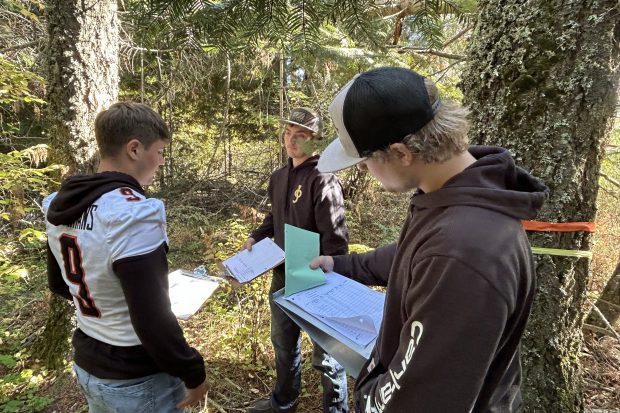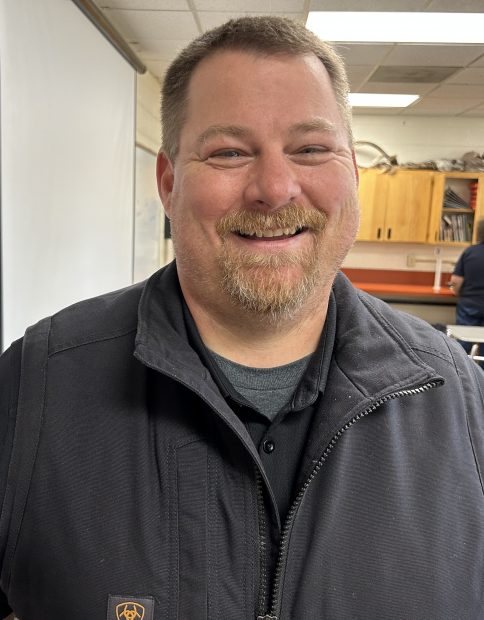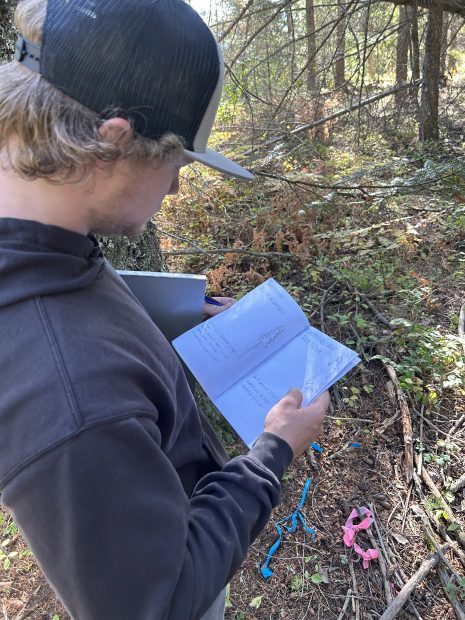
PRIEST RIVER — Eight seniors in Jared Hughes’ forestry class measured the diameters of Douglas firs and discussed career options on a beautiful fall morning in the woods behind their school.
“Timber and forestry is relevant to our community and their backgrounds,” Hughes said.
Colton Brooks doesn’t mind being out of the classroom. Fishing, hunting, riding dirt bikes — recreating and working in the area’s forests is simply a way of life here. Brooks attends Priest River Lamanna High School and is enrolled in Hughes’ botany/forestry course that explores ecology and management.
“It’s way better out here,” Brooks said, with a slight grin.
Priest River is one of the rural epicenters of Superintendent Debbie Critchfield’s effort to push millions of dollars into career technical education to build-up programs that will train graduates to meet the needs of local industries.

In the panhandle region, that means timber production. And there’s plenty of opportunity. According to the American Forest and Paper Association, the U.S. forest products industry manufactures almost $300 billion in products a year and employs about 1 million workers. And Idaho is one of the top lumber producing states.
The state’s $45 million CTE grant program is called Idaho Career Ready Students. Last month, over $16 million was awarded to 11 initial programs. The second round of requests are due Nov. 1. Priest River is asking for $1 million.
“It really excites me that we … are focusing on rural, underserved districts for different career ready pathways,” Hughes said.
Training students in GIS mapping, ecology conservation and chainsaw operation could impact the town’s economic future. After the 2008 housing crash, the number of mills and the need for labor to produce wood products decreased. Although the demand for lumber slowed, the trees remain and young people continue looking for career opportunities, especially those that keep them in Priest River.
Several of the seniors in Hughes’ class want a job that has an opportunity to stay close to home. Although 17-year-olds Kemper Dabrowski, Kayden Reynolds and Brooks are part of multi-generational logging families, they are thinking about training as an electrical lineman, a diesel mechanic and an electrician.
Hughes has a plan — build a program that trains and inspires seniors to embark on natural resource careers.
On the 20-acre plot of forest behind the high school owned by the school district, Reynolds used an increment borer to drill half way into the Douglas fir. A core sample shows the 100-foot-tall tree is about 76 years old.
“What’s the DBH?” Hughes asked.
“19.8 inches,” Brooks responded. DBH stands for diameter at breast height, a measurement taken at 4.5 feet above the tree’s base.
Discussion turned to tree identification, and Hughes reminded students that hemlocks have a purple inner bark. The focus of Thursday’s class was timber cruising, a way to count volume. Reynolds said the total number of trees can be determined by counting up how many are in 1/10 of the area, and multiplying that by 10.
“That gives you the amount of trees in the whole acre,” he said.
According to Hughes, the goal is to provide industry partners with students who can step in “ready to go.” If the grant is approved, he plans to transform the acreage into a working forest — harvesting, planting and producing wood products.
What Priest River is requesting
Priest River is a rural, outdoor community that likes to hunt, fish and recreate. “Let’s create a workforce that manages our forest,” Hughes said, who has been teaching forestry for 15 years.
The high school has four certified CTE teachers. Hughes, who is certified in natural sciences, plans to obtain CTE certification to lead a new forestry program, which falls under the natural resource and plant soil science pathway. Although he taught forestry, there has never been an official forestry-related CTE pathway.

There was a time when Hughes taught 30 students but today it’s down to an average of 10-15 the last couple of years.
According to historical data, enrollment peaked around 513 students 20 years ago; today that number is around 316. In that same period, the number of students in the district shrunk by 27%, from 1,580 to 1,149.
The grant would fund four areas:
- Curriculum: forestry science and management; forest products; wildlife ecology and management; GPS/GIS/mapping.
- Equipment: lumber production equipment; equipment for cruise, soil and disease assessments; scaling, tree planting, forest ecology, wildlife science.
- Building: a new building/complex, plus passenger vans.
- Classroom equipment: safety equipment and classroom technology, like printers and plotters to handle large maps, GPS and drones for collecting forest data.
“It’s been a long time coming because Idaho has one of the largest percentages of national forests and endowment grant lands. This is surprising that we haven’t done it before. But the funding hasn’t been there,” Hughes said.
The communities of Orofino, Bonners Ferry, Potlatch, Troy, Deary and St. Maries have similar resources and the same potential as Priest River, he said.
